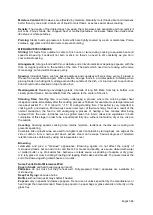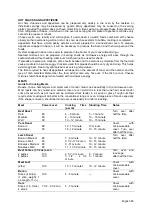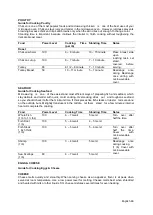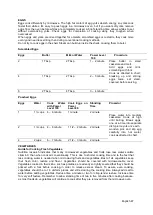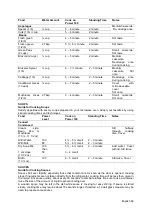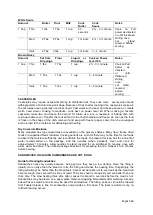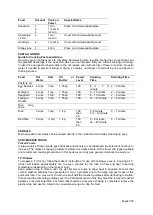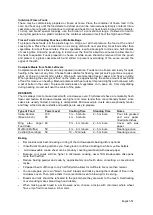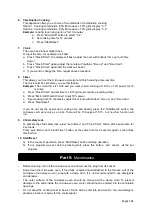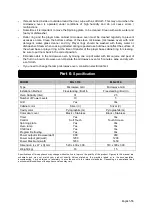
English 44
Moisture Content:
Microwaves are attracted by moisture. Naturally moist foods absorb microwaves
better than dry ones. Add a minimum of liquid to moist foods, as excess water slows cooking.
Density:
The density of food determines how easily the microwaves can penetrate and how quickly it
will cook. Porous foods, like chopped beef or mashed potatoes, microwave faster than dense ones
like steak or whole potatoes.
Piercing:
Steam builds up pressure in foods which are tightly covered by a skin or membrane. Pierce
potatoes, egg yolks and chicken livers to prevent bursting.
MICROWAVE TECHNIQUES
Stirring:
Stir foods from outside to center of dish once or twice during cooking to equalize heat and
speed microwaving. Foods will not burn or stick, so there‘s no need to stir constantly as you do in
conventional cooking.
Arrangement:
Arrange foods with thin or delicate ends, Iike drumsticks or asparagus spears, with the
thick or tougher portions to the outside of the dish. The parts which need more cooking will receive
more energy, so food will microwave evenly.
Spacing:
Individual foods, such as baked potatoes and cupcakes will cook more evenly if placed in
the oven an equal distance apart. When possible, arrange foods in a circular pattern. Similarly, when
placing foods in a baking dish, arrange around the outside of the dish, not lined up next to each other.
Food should not be stacked on top of each other.
Rearrangement:
Rearrange overlapping areas, Iike tails of long fish fillets, from top to bottom, and
closely packed pieces, like meatballs, from the outside to the center of the dish.
Standing Time:
Standing time is currently undergoing a process where the cuisine greater heat
dissipation inside immediately after the cooking process is finished, for example meat temperature will
rise about sekitar 5
o
– 8
o
C (about 9 ° -15 ° F) during standing time. This period is very important in
cooking with a microwave. Microwaves cause outer layer of thermal energy food, as a result of the
normal conduction, the food is still undergoing a process of heating a few minutes after being
removed from the oven, let dishes such as grilled meat, thin foods, cakes and vegetables in bulk,
completion of this stage in order to be a central part fully ripe, without too mature, dry or too crisp on
the outside.
Covering:
Covering speeds cooking time, retains moisture, tenderizes, insures even cooking and
prevents spattering.
Casserole lids or plastic wrap are used for a tighter seal. Vent plastic by turning back one edge at the
side of dish to form a narrow slot where excess steam can escape. Various degrees of moisture
retention are also obtained by using microwaveable cover.
Browning
caramelize and give a "browned" appearance. Browning agents do not affect the quality of
microwaved foods, but can add color and flavor. For meats and poultry, use sauce diluted with water
or melted butter, soy, Worcestershire, barbecue or steak sauce, a sprinkling of paprika or dry gravy
mix; jelly glaze or crumb coating. Frosting and topping finish cakes and breads. Top casseroles at the
end of microwaving with grated cheese or crumbs.
Some Foods Do Not Microwave Well
Eggs in Shells
and hard boiled eggs can burst.
Pancakes
do not crust, but they reheat well. Fully-prepared, frozen pancakes are available for
microwaving.
Deep Fat Frying
can cause burns.
Bottles
with narrow necks may shatter if heated.
Popcorn
only in special microwave poppers. Do not use oil unless specified by the manufacturer, or
heat longer than recommended. Never pop popcorn in paper bags or glass utensils or directly on the
glass tray.















